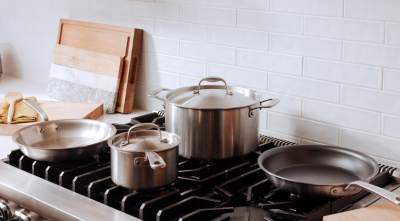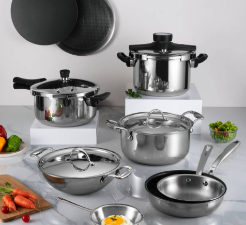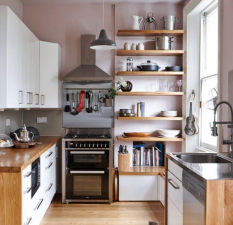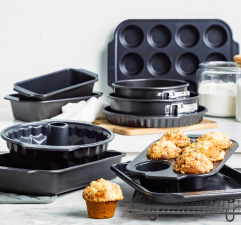How to Choose the Best Pots and Pans
Cooking pots, cutting boards, and eating bowls, knives, and forks directly impact the health of our daily food! How do we choose the right one?
The choice of tableware depends on individual needs! Furthermore, not every type of tableware is perfect, and there are precautions to be taken during use! Let's take a look!
Which type of pot is best?
The sheer variety of pots and pans on the market can be overwhelming, but each has its own pros and cons. Choose based on the ingredients and intended use.

① Iron pot: Currently the safest pot
Iron pots generally contain no other chemicals and won't oxidize. During cooking and cooking, iron pots don't leach out, preventing any detachment. Even if iron leachates, it's beneficial for human absorption.
② Non-stick pot: Not suitable for high-temperature frying
The non-stick coating is essentially a thin film, about 0.2 mm thick. Dry cooking or oil temperatures exceeding 300°C can damage this film. Generally speaking, cooking temperatures do not reach 260°C (140°F), but frying can exceed this temperature.
Therefore, non-stick pans should not be used for frying. Additionally, when frying in a non-stick pan, avoid using a spatula to avoid damaging the coating.
③ Ceramic pots and casseroles: Not suitable for acidic food.
Porcelain pots were once considered non-toxic, but some low-quality porcelain tableware contains lead in its glaze. Long-term use of products with excessive lead and cadmium leaching can cause heavy metal poisoning, seriously affecting your health.
Casseroles contain a small amount of lead in their glaze, and casseroles with colored interiors should not be used to store alcohol, vinegar, or acidic beverages or foods.
When choosing enameled tableware, look for a smooth, evenly applied enamel, and a bright color.
④ Stainless steel pots: Not suitable for storing salt for extended periods
Stainless steel utensils are beautiful and durable, but substandard stainless steel pots may contain excessive amounts of chromium. Stainless steel is not completely rustproof and can react chemically with prolonged contact with acids or alkalis. Therefore, stainless steel utensils should not be used to store salt, soy sauce, or soup for extended periods.
⑤ Aluminum tableware: Not recommended
Aluminum pots offer excellent heat distribution and are lightweight.
However, improper use can cause aluminum to leach out in large quantities. Long-term consumption of excessive aluminum can accelerate aging. Aluminum pots should not be used for high-temperature frying or stir-frying. High temperatures or the impact or friction between a metal spatula and the pot during cooking can release aluminum. Furthermore, aluminum pots should not be used to store dishes containing strong acids or bases, such as pickled foods.
Which cutting board is best?
How should you choose a cutting board, and how can you use it healthily?
① Wooden cutting boards:
Suitable for chopping meat or hard foods, but can easily harbor bacteria. Because wooden boards are thick and sturdy, they are often used for chopping meat and processing harder foods. However, wooden cutting boards are prone to cracking, harboring dirt and bacteria, and some low-quality boards often shed sawdust. Furthermore, if the environment is dark and damp, mold and mold may develop. ② Bamboo Chopping Board:
Not suitable for chopping meat, but easy to clean and air-dry.
Compared to wooden chopping boards, bamboo boards avoid these drawbacks and are easier to air-dry and clean. However, since they are often made of joints and lack thickness, they are best not used for chopping meat.
③ Plastic Chopping Board:
Not suitable for hot foods.
Plastic chopping boards are not suitable for cutting hot foods. Furthermore, when using plastic boards to cut greasy foods, they must be cleaned thoroughly to prevent bacterial growth.
So, if you're chopping fresh fruits and vegetables, all three materials are acceptable. For greasy cooked foods and hot foods, bamboo and wooden boards are best. For sturdy foods, high-quality wooden boards are best.
Regardless of the material, the chopping board needs to be cleaned and maintained regularly, the surface must be kept dry, and raw and cooked items must be separated.

Which type of tableware is best?
Which is better for household bowls: glass, porcelain, or imitation porcelain? Are there any precautions for using them?
① Ceramic bowls: Underglaze or plain patterns are recommended.
Ceramic tableware is our most commonly used tableware. Besides bowls and plates with white interiors, there are also many colorful bowls and plates on the market.
Colored ceramic tableware is divided into underglaze and overglaze based on the process.
▼ Underglaze is the process of first applying color to the ceramic, then firing at high temperature, until the pigment is covered by glaze. These ceramic cups feel smooth to the touch, and heavy metals in the pigment are unlikely to leach out.
▼ Overglaze is the process of first forming a glaze, then applying the color, and then firing at low temperature, leaving the pigment on the surface of the glaze. This creates a patterned look and a 3D feel, but heavy metals in the pigment are more likely to leach out.
In general, safety is: white and plain > colored underglaze > colored overglaze.
② Imitation porcelain bowls: Cannot be heated, shatter-resistant. Imitation porcelain tableware is a thermosetting plastic made of melamine formaldehyde resin, which is non-toxic and harmless. Because it resembles porcelain bowls and is less prone to breakage, many parents prefer it for their children.
▼ Do not use at high temperatures. Melamine tableware maintains stable performance within a temperature range of -30-120°C. Avoid microwaves, high temperatures, or exposure to strong acids or alkalis.
▼ Purchase from reputable supermarkets and read the label on the bottom of the bowl. Avoid melamine tableware with a rough surface or bubbles. At high temperatures, it can easily decompose into formaldehyde and ammonia, which can be harmful to human health.
▼ Avoid using hard objects such as steel wool to clean melamine tableware, as this can easily scratch it, trapping food residue and breeding bacteria.
③ Glass Containers:
The use of heat-resistant glass requires careful considerations.
Nowadays, there are many glass bowls, plates, and cups. From a safety perspective, ordinary glass cups and bowls rarely leak harmful substances. Furthermore, heat-resistant glass is now available, suitable for microwave heating.


